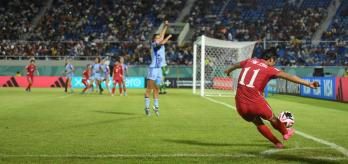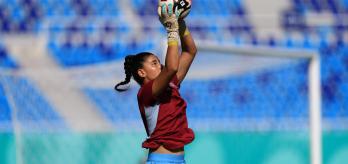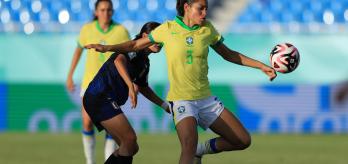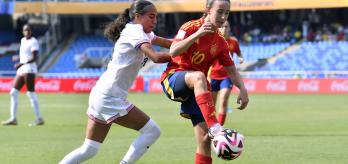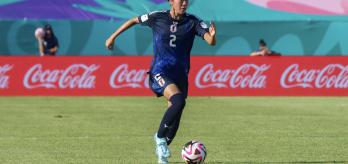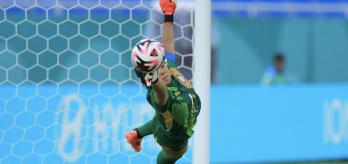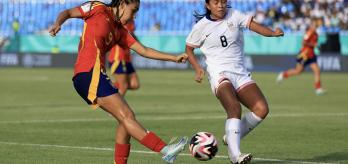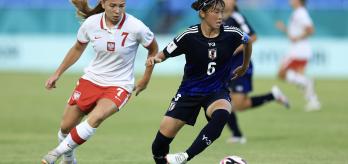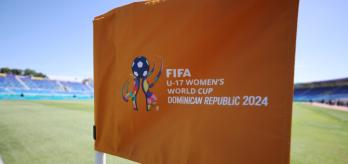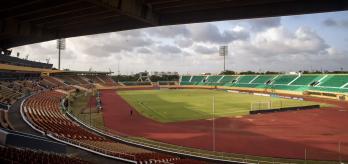The group stages of the FIFA U-17 Women’s World Cup Dominican Republic 2024™ have concluded with the knockout stages set to be intriguing as teams with different styles of play bid to be crowned world champions. Nigeria and Ecuador progressed from Group A and in this article, Shaun Goater, from our Technical Study Group (TSG), summarises how each of the four teams fared.
Nigeria
In possession
Table-toppers, Nigeria, won three from three games and have all the characteristics of a modern-day team. Their centre-backs, Jumai Adebayo (6) and Hannah Ibrahim (4), push high and squeeze opposing teams into their own half, and both players display strong leadership and game intelligence, with a genuine understanding of their respective roles in different defensive situations. Using a 1-4-4-2 system, the two centre-forwards, Harmony Chidi (9) and Peace Effiong (15) have real pace making it difficult for opposition defenders to contain them while their midfielders play with intention, aggression and discipline when hunting down second balls or possession regains when they do not have the ball.
Out of possession
Nigeria are an extremely organised team who are particularly effective at pressing and winning the ball back but are also clever when they have the ball, capable of retaining possession and playing intelligent passes into dangerous spaces. Their build-up patterns are clear, and players know their roles, making them a very impressive side in the group phase.
Ecuador
In possession
Ecuador played with two defensive midfielders in their consistent 1-4-2-3-1 shape with captain Fiorella Pico (5) having a real influence on her team’s games from this position. She is a highly technical player that reads the game well and has a nice range of passing, meaning she was particularly influential in transition moments when she could execute clever passes to release her forward players. Right-winger Mary Guerra (11) often benefitted from these out balls and the timing of her runs and movements was an important success factor in their attacking play.
Out of possession
Since Ecuador commit numbers forward when attacking, at times they were vulnerable and open on transitions to defend.
Dominican Republic
In possession
The host nation, Dominican Republic, performed very well in their matches and really thrived off the great support they received from the home crowd. When they had the ball, Natalie Bruno (15) was instrumental in driving her team forward, both with ball carries and incisive forward passes. She had good technique, and she worked hard to try to bring her centre-forward Ava Barker (16), into the game.
Out of possession
Out of possession, Dominican Republic worked hard but at times found some of their opponents difficult to manage in 1v1 situations. However, their participation in this tournament and their exposure to playing at this level will only elevate the development of these players, who played with a lot of pride and passion.
New Zealand
In possession
In possession, both of New Zealand’s centre-backs, Alyssha Eglinton (3) and Charli Dunn (4), were quite comfortable on the ball. Building in a back four, the centre-backs often went direct to their forward players which meant their games tended to be quite transitional.
Out of possession
When New Zealand did not have the ball, their midfielders brought a lot of energy to their performances, working hard to win the ball back, but again, the experience these players have gained from playing in this tournament will really stand to them for their future development.






